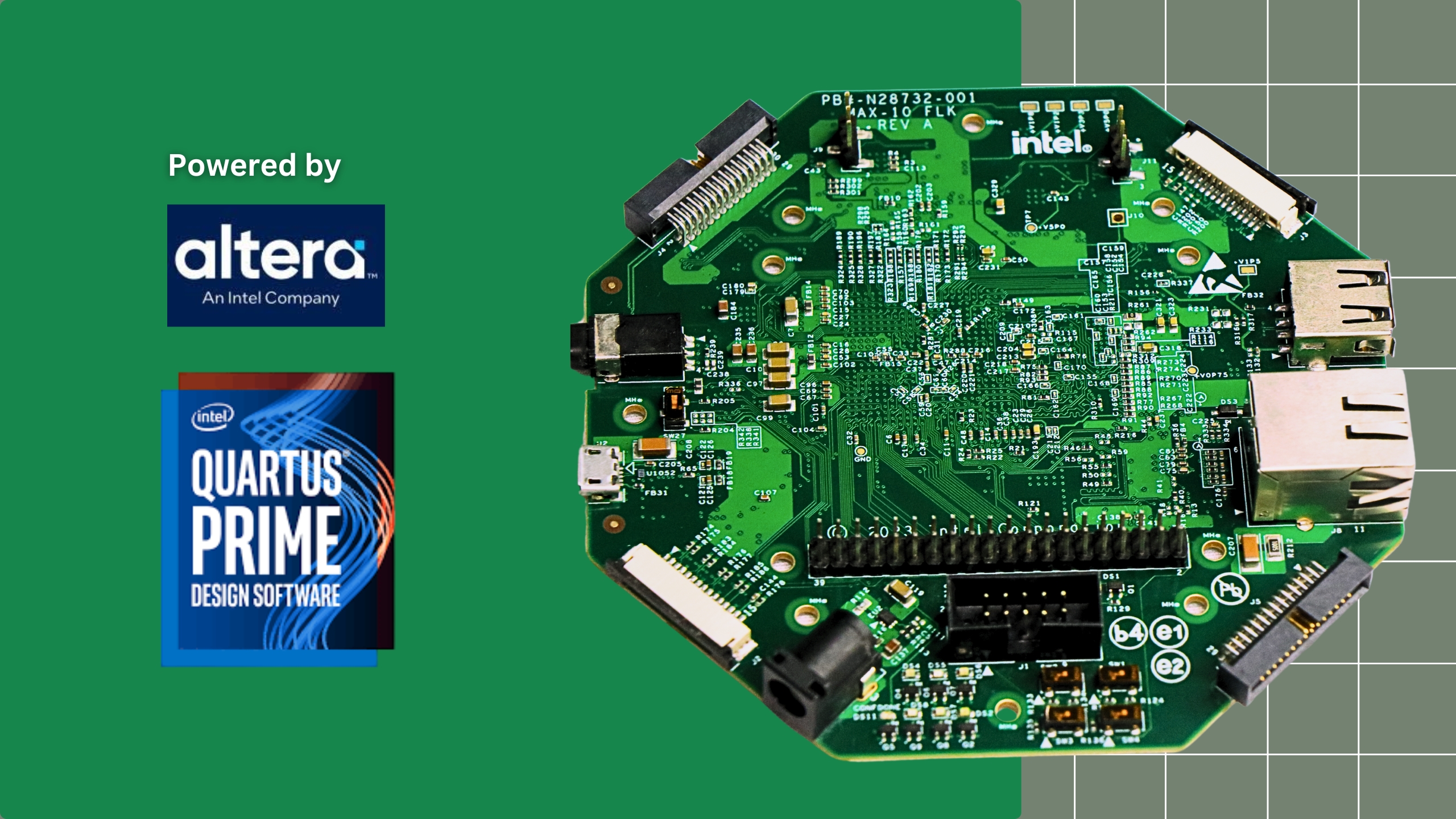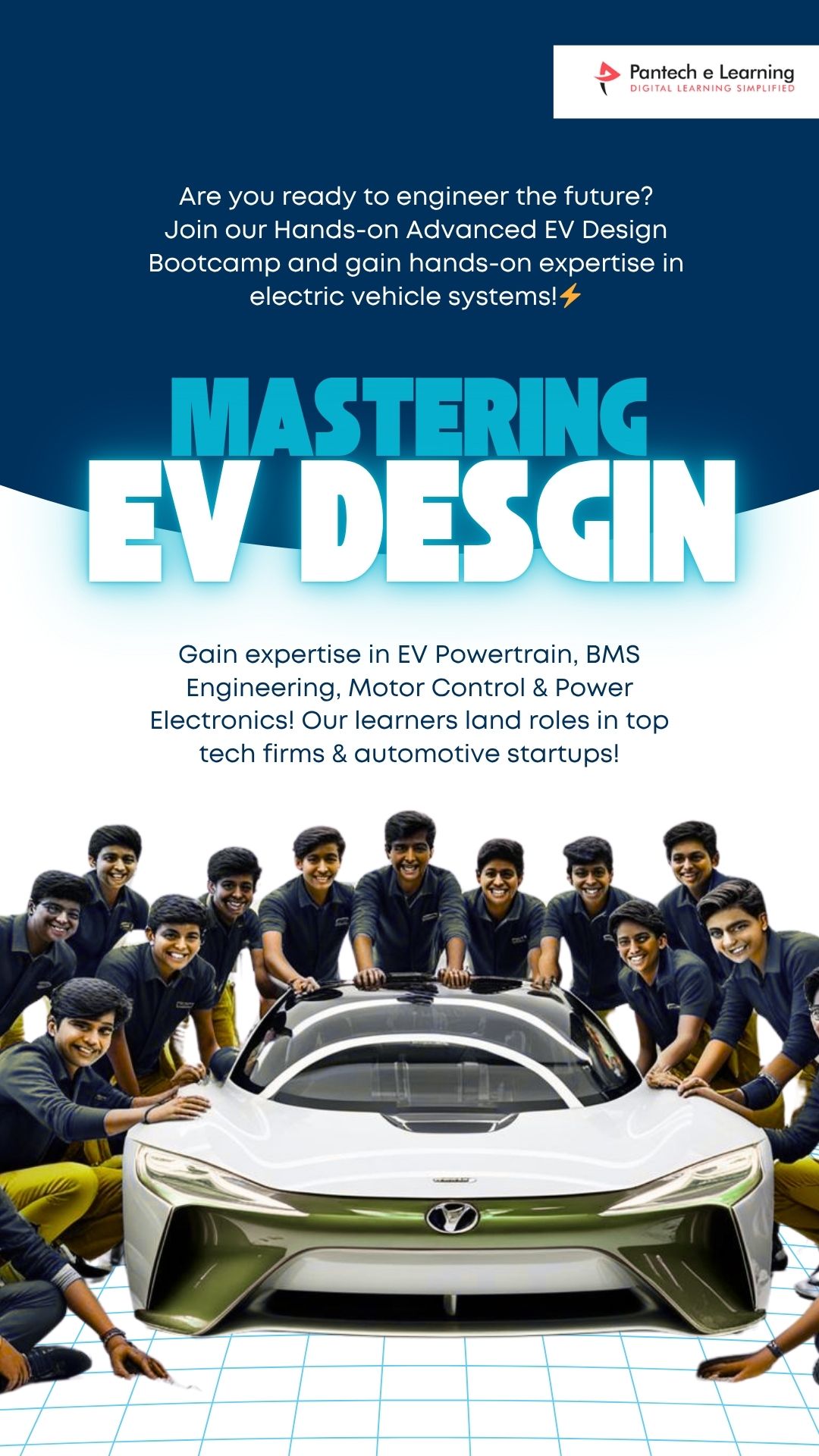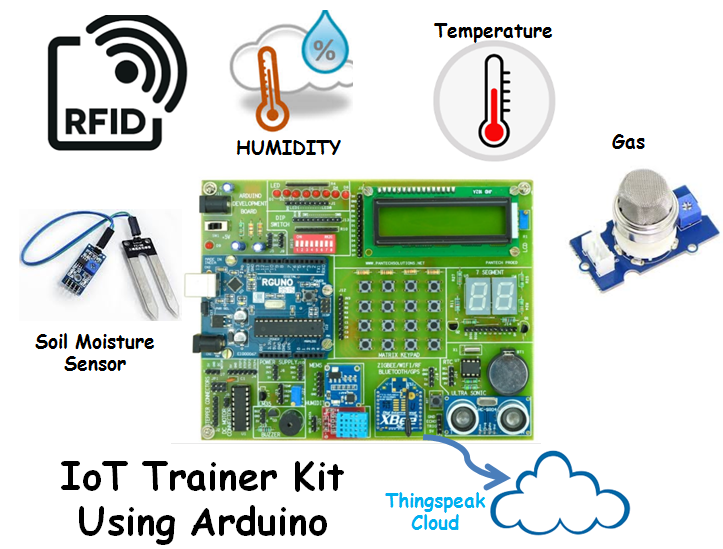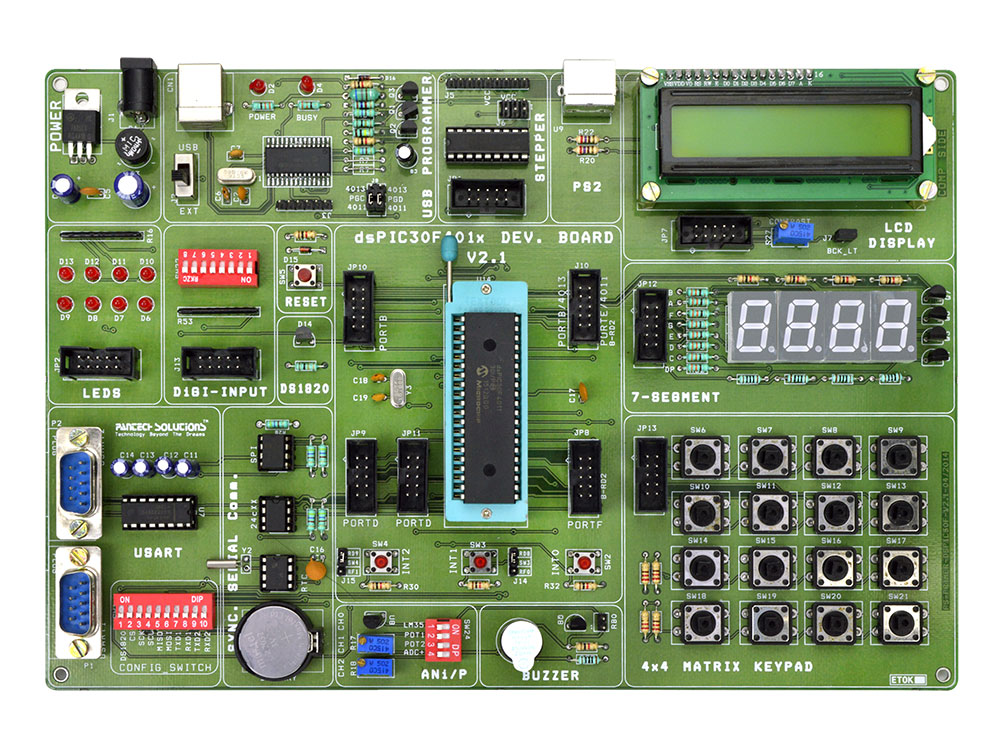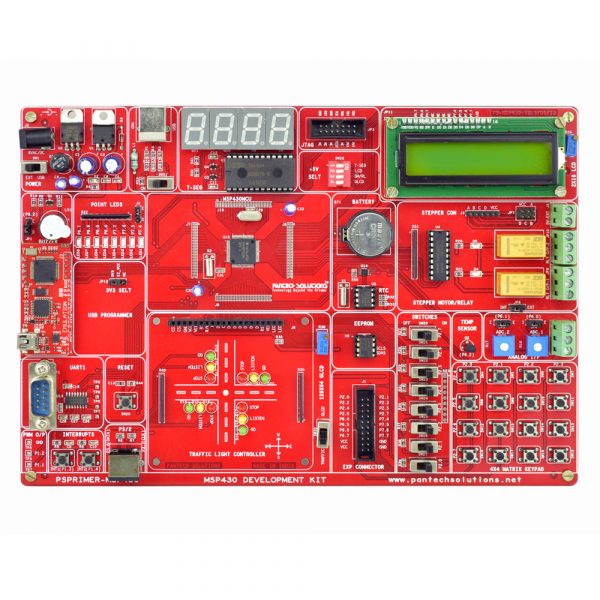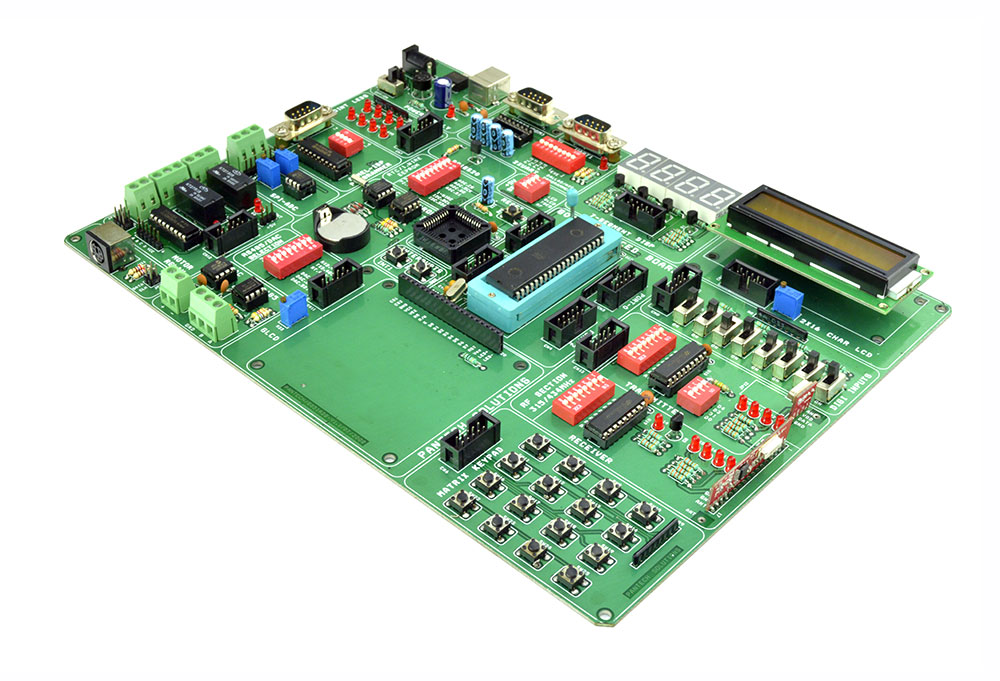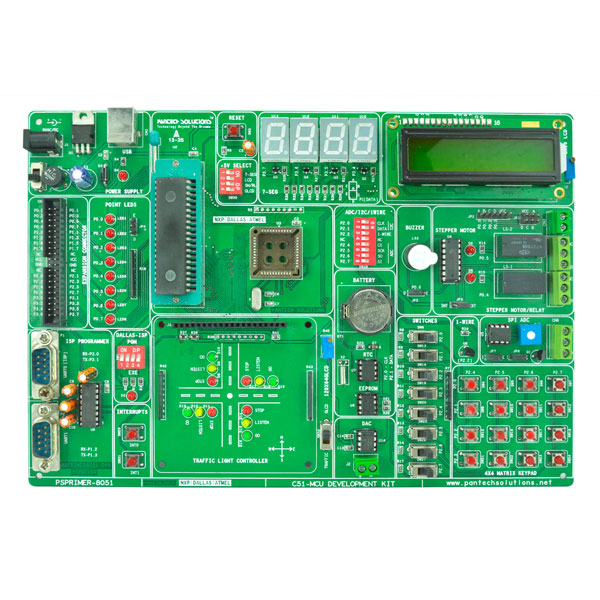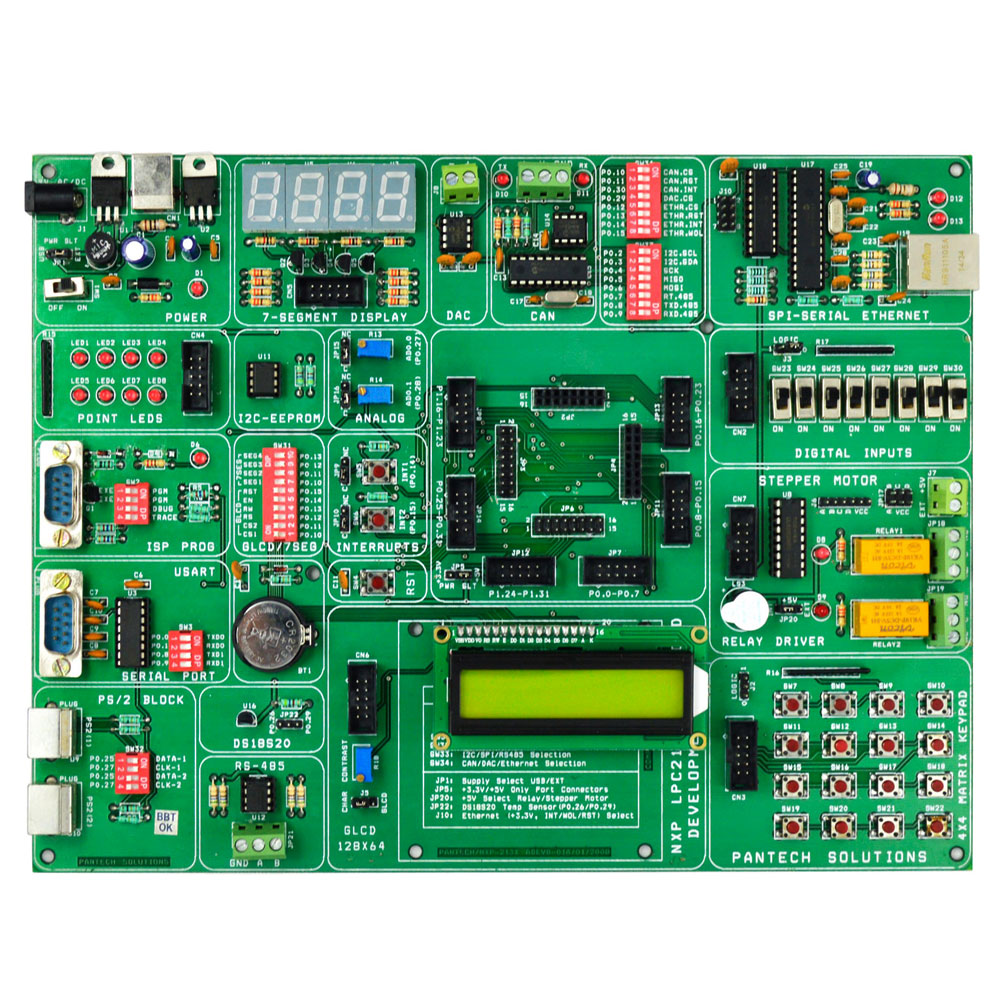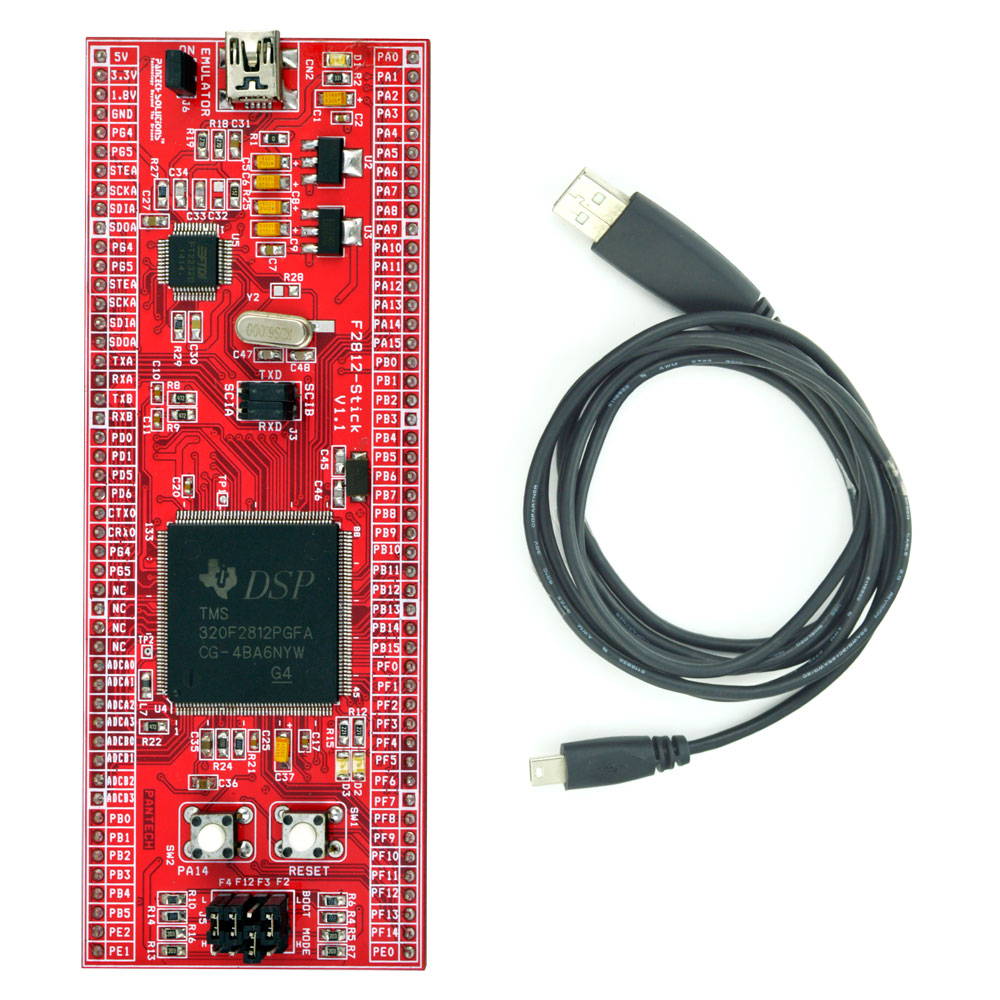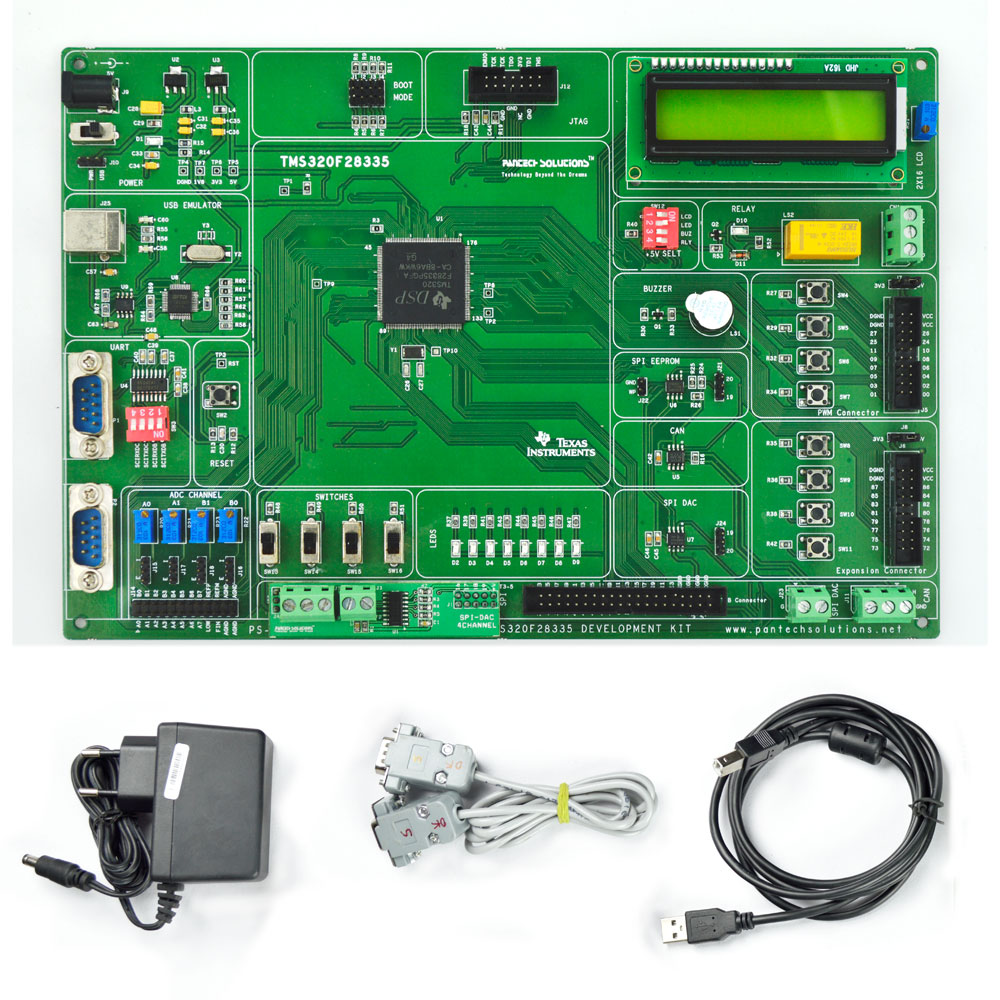Implementing Quantum Computing Concepts on FPGA: A Practical Approach to Next-Generation Computing
A
technical exploration of quantum simulation using Intel MAX10 FPGA for
educational and research applications
Author: A.Manikandan | Organization: Pantech eLearning | Date: August 2025
The visit delivered substantial value to the academic team:
- 🎓Strengthened Understanding of AI Deployment on Hardware
- 🛠️ Practical RTL Design Workflow Exposure
- 🔄End-to-End System Integration Skills
- 📘Reinforcement of Academic Curriculum in Real-World Contexts
It served as a collaborative bridge—empowering faculty to translate these insights into enriched classroom learning, lab innovations, and student project guidance.
Executive Summary
As quantum computing emerges as a transformative technology, understanding its fundamental principles becomes crucial for engineers and researchers. This project demonstrates how Field-Programmable Gate Arrays (FPGAs) can serve as powerful platforms for quantum computing education and simulation, making complex quantum concepts accessible through hands-on implementation.
We successfully developed and deployed a quantum coin flip simulation on an Intel MAX10 FLK FPGA development board, creating an interactive demonstration that showcases key quantum mechanical principles including superposition, quantum measurement, and true randomness generation.
Figure 1: Quantum computing concepts visualization showing qubit superposition, Bloch sphere representation, and FPGA implementation overview
Quantum Computing Basics: Understanding the Fundamentals
What is Quantum Computing?
Quantum computing harnesses quantum mechanical phenomena to process information in ways impossible for classical computers. While classical computers use bits (0 or 1), quantum computers use quantum bits (qubits) that can exist in superposition – simultaneously being both 0 and 1 until measured.
Core Quantum Principles
1. Superposition
A qubit can exist in a combination of |0⟩ and |1⟩ states simultaneously. This is like a coin spinning in the air – it’s both heads and tails until it lands. Mathematically represented as: |ψ⟩ = α|0⟩ + β|1⟩
2. Quantum Measurement
When we measure a qubit in superposition, it “collapses” to either |0⟩ or |1⟩ with probabilities determined by the quantum amplitudes. This collapse is genuinely random – even Einstein called it “spooky action.”
3. Quantum Gates
These are operations that manipulate qubit states. The most important is the Hadamard gate, which creates equal superposition:
H = (1/√2) × [1 1 ]
[1 -1]
4. Quantum Entanglement
Qubits can become “entangled,” creating mysterious correlations where measuring one instantly affects another, regardless of distance.
Why Quantum Computing Matters
· Exponential Speedup: Quantum algorithms can solve certain problems exponentially faster than classical computers
· Cryptography: Both threatens current encryption and enables unbreakable quantum cryptography
· Scientific Simulation: Natural for simulating quantum systems in chemistry, physics, and materials science
· Machine Learning: Quantum machine learning algorithms show promise for pattern recognition
Hardware Platform: Intel MAX10 FPGA Development Board
The project utilizes the Intel MAX10 FPGA development board, featuring:
· 50,000 Logic Elements with embedded memory
· GPIO Expansion headers for external component interfacing
· USB Programming interface for Quartus Prime development
· Integrated Peripherals including on-board switches and LEDs
This platform provides excellent capability and accessibility for quantum computing education.
Technical Implementation
System Architecture
Figure 2: Quantum coin flip game system architecture
Our quantum simulator implements:
Hardware Layer: MAX10 FPGA with external components
Quantum Engine: 16-bit fixed-point arithmetic for qubit state calculations
State Machine: Five-state controller (IDLE→PREPARE→SUPERPOSITION→MEASURE→RESULT)
User Interface: Push buttons and LEDs for interaction
Display System: Multiplexed 7-segment displays
Quantum State Representation
Challenge: Representing complex quantum amplitudes in digital hardware
Solution: 16-bit fixed-point arithmetic using 8.8 format
- Real and imaginary components stored in dedicated registers
- Hadamard gate implemented through optimized matrix operations
- Multiple entropy sources for true randomness (LFSR + clock jitter + user timing)
Game Implementation
Game Flow:
- Prepare Button: Applies Hadamard gate, creates superposition
- Superposition LED: Blinks showing qubit in quantum state
- Measure Button: Collapses state, shows random outcome
- Result LEDs: Display Heads/Tails result
Key Engineering Solutions
Display Multiplexing: Reduced pin usage from 14 to 9 pins using time-division multiplexing at 380Hz
Common Anode Compatibility: Inverted all logic levels and implemented PNP transistor switching for proper display operation
Button Debouncing: Three-stage synchronizer with edge detection for reliable user input
Random Number Generation: Combined LFSR, clock jitter, and user interaction timing for genuine quantum-like randomness
Results and Validation
Performance Metrics
Parameter | Target | Achieved |
Clock Frequency | 50 MHz | 50 MHz |
Response Time | <100 ns | 38 ns |
Display Refresh | >300 Hz | 380 Hz |
Logic Utilization | <20% | 15% |
Statistical Accuracy | <5% deviation | 4% deviation |
Statistical Analysis
100+ Trial Testing Results:
- Outcome Distribution: 52% Heads, 48% Tails (4% deviation from theoretical 50/50)
- Randomness Quality: Passed chi-square test for uniformity
- No Detectable Patterns: Confirms quantum-like randomness behavior
Educational Impact
Abstract quantum principles became tangible through hardware interaction
Students gained both quantum theory and FPGA development experience
Successful integration of physics, mathematics, and engineering
Solid foundation established for advanced quantum computing studies
Development Environment
Hardware Platform:
- Intel MAX10 FLK FPGA Development Board
- External components: buttons, LEDs, 7-segment displays
- USB-Blaster programming interface
Software Tools:
- Intel Quartus Prime Lite Edition (free FPGA development suite)
- ModelSim for simulation and verification
- Git-based version control and documentation
Code Architecture:
module quantum_coin_flip (
input wire clk, reset_n,
input wire prepare_btn, measure_btn,
output reg heads_led, tails_led, superposition_led,
output reg [6:0] seg_out,
output reg dig0_en, dig1_en
);
Key features include 16-bit fixed-point quantum calculations, hardware-optimized Hadamard gate, robust button debouncing, and comprehensive testbench validation.
Applications and Future Development
Educational Applications
- University Curricula: Hands-on quantum computing courses
- Industry Training: Professional development for quantum technologies
- STEM Outreach: Engaging demonstrations for quantum literacy
- Research Platforms: Foundation for advanced quantum algorithms
Commercial Potential
The quantum computing market is projected to reach $1.3 billion by 2028, with critical shortage of quantum-trained engineers. This FPGA approach provides:
- Cost-effective education ($500-1000 vs $50,000+ annual cloud access)
- Immediate availability without queue times
- Customizable curricula for specific learning objectives
- Scalable deployment across institutions
Future Roadmap
Phase 1 (3-6 months): Additional quantum gates, enhanced visualization
Phase 2 (6-12 months): Multi-qubit systems, CNOT gates, Bell states
Phase 3 (12+ months): Grover’s algorithm, quantum teleportation, error correction
Conclusion
This project successfully demonstrates that quantum computing education can be made accessible through innovative FPGA implementation. By representing quantum concepts in reconfigurable hardware, we bridge the gap between theoretical understanding and practical application.
The Intel MAX10 platform proved excellent for this implementation, offering the perfect balance of capability and educational value. Students can now experience quantum superposition, measurement, and randomness firsthand through tangible hardware interaction.
Strategic Value for Pantech eLearning
This project positions Pantech eLearning at the forefront of quantum education technology with:
- Market leadership in quantum FPGA education
- Technical expertise in emerging technologies
- Educational innovation in complex subject delivery
- Scalable solutions for diverse educational contexts
As quantum computing transitions from research to industry, practical training solutions become essential. This FPGA-based approach provides optimal balance of accessibility, cost-effectiveness, and technical depth.
The future of computing is quantum, and preparing the next generation requires innovative tools like this quantum FPGA simulator. By making quantum concepts tangible and interactive, we accelerate development of quantum-literate professionals essential for technology industry evolution.
About the Project
Project Specifications:
- Duration: 3 months from concept to implementation
- Platform: Intel MAX10 FLK FPGA with external circuits
- Tools: Quartus Prime Lite Edition, ModelSim simulation
- Applications: Educational curricula, research platforms, industry training
Resources Available:
- Complete Verilog source code and testbenches
- Hardware schematics and connection diagrams
- Comprehensive documentation and user guides
- Educational curriculum and video demonstrations
Contact: For quantum computing courses, FPGA development training, or licensing this platform, contact Pantech eLearning.
#QuantumComputing #FPGA #MAX10 #QuantumEducation #PantecheLearning #QuantumSimulation #STEMEducation #EmergingTechnologies
Looking Ahead: Collaborate With Us
- Email: sales@pantechmail.com
- Website: pantechelearning.com
- Exploring EV models & Battery Management Systems
- Deep dive into autonomous systems & Steer-by-Wire tech
Let’s innovate together—and prepare the next generation of tech leaders.
- All Projects
- Product
